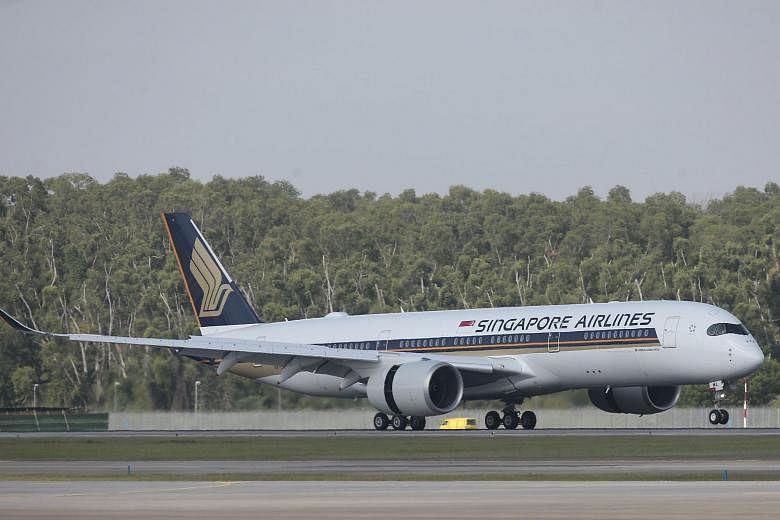The last time that a Singapore Airlines (SIA) plane had such a grand welcome was in October 2007, when the carrier brought home its first Airbus 380 superjumbo.
It was a historic moment for the airline and, indeed, Singapore. SIA was the first to fly the world's biggest passenger jet.
A similar scene, with cheers, applause and the traditional water cannon salute, was played out at Terminal 3 when SIA's A-350 arrived home yesterday.
But much has changed in the last decade.
While the A-380s play a key role in supporting SIA's operations to major airports in London, Paris, Sydney and New Delhi, among other key cities, it is the A-350 that SIA is betting on to boost its long-haul business.
With 67 jets ordered, it's a huge but necessary US$20.6 billion (S$28.6 billion) investment (at catalogue price).
While rivals like Emirates, Qatar Airways and Cathay Pacific have expanded their networks with new flights to new destinations in recent years, the Singapore carrier has not been able to do the same, simply because it did not have the right aircraft to fight back.
The A-350 workhorse, with its superior operational efficiencies, will give SIA a chance to do so.
For one thing, it will allow the airline to resurrect non-stop flights to the United States in 2018.
Services to Los Angeles and New York were axed in 2013 after high fuel costs and weak demand made the flights commercially unviable.
Among SIA's order of A-350s are seven ultra-long-range versions of the jet that will support the Singapore-US flights.
SIA is confident the A-350 is a game-changer, but it is by no means a magic potion. The competition is stiff and will continue to intensify.
While demand for premium travel has held up so far, there is pressure on pricing with a lot of capacity in the market, according to SIA chief executive Goh Choon Phong.
And, given the global economic outlook, he said: "We do expect that it will affect business demand at some point."
SIA must stay nimble to respond to changing market conditions.
It is for this reason that the airline has decided to cut the number of ultra first-class suites on its future A-380s.
SIA, which has 19 of the superjumbos in its fleet - each with 12 suites - has five more A-380s still to be delivered.
Efforts are also continuing to build a portfolio of carriers to give the group a presence in all key markets.
Instead of focusing only on premium travel, SIA now has Scoot, which operates long-haul budget flights, and Tigerair, which offers low-cost flights within the region.
The plan is to allow customers to move conveniently from one carrier to another.
Partnering other carriers is also a key part of the overall strategy.
In November last year, for example, SIA and German carrier Lufthansa announced a wide-ranging partnership to operate key routes between Europe and Singapore jointly and to significantly expand codeshare ties and deepen commercial cooperation.
The two carriers also intend to offer joint fare promotions, among other initiatives.
To expand its foothold, SIA also owns about a fifth of Virgin Australia and 49 per cent of New Delhi-based Vistara.
Amid tough times, SIA has taken significant steps in the last five years to restructure the business, in an attempt to keep flying high.
The arrival of its A-350 marks another key milestone in the journey.




